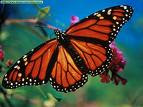The Heath Basic Writer Problem-Solving Strategies for Writing
Blanche Skurnick Linda Flower
Summary and Discussion Questions:
The Heath Basic Writer
This excerpt is made up of three parts:
To the Instructor:
-It’s an introduction and description of the book for the instructor.
-It explains that it is a student friendly manuscript (see ix).
-The book is basically a proof-reading course based on Mina Shaughnessy’s theory of basic writing. (Mina Shaugnessy is the person who established the basic writing precedence at CCNY and she is responsible for starting the Language and Literacy Program). Shaughnessy’s theory is formulated around the idea that students “were learning grammar formally but were not learning how to control error in their writing.”
To the Student:
-It is an explanation of how grammar instruction will improve their writing.
-It describes what manipulating language is and how it can make one’s writing distinctive.
-It assures students that when they have completed the course, they will be more confident writers.
Table of Contents:
-There are thirteen chapters in “The Heath Basic Writer.” These include subjects on, “From Topic to Specific Idea,” “Basic Sentence Facts,” “The Verb and the Subject,” “Subordination,” “Coordination, Parallelism, and Comparison,” “The Comma and Other Forms of Punctuation,” “Subject-Verb Agreement,” “Verb Tense and Voice,” “Verb Form and Mood,” “Pronoun-Antecedent Agreement,” “Proofreading - Accounting and Summary,” “The Right Word/Too Many Words/Too Few Words,” and “Idea to paragraph.”
-There are also three appendixes that cover “The Essay Question – Mid-terms and Finals,” “Spelling and the Dictionary,” and “Usage.”
Problem-Solving Strategies for Writing
-This excerpt is a preface to the book.
-It describes the book as a “process-based rhetoric” that encourages writers to concentrate more on the process of writing than on the end result of the writing.
- In order to get a thorough understanding of how to translate the concept of writing into a descriptive process, Flower’s collaborated with John R. Hayes, a cognitive psychologist, of Carnegie-Mellon University. His interest is in creativity and problem-solving and he also was curious to know, “What do writers actually do?” and “How can they learn to do it better?” Their objective is to help writers to become more conscious of their cognitive processes, and therefore more competent and confident during the writing process.
-Flower’s book is a combination of traditional and current research on rhetoric, in an effort to display the writing process for effective writing.
-The first two chapters of the book describe various types of writing such as academic, professional and personal writing. They also illustrate the basic process of analyzing a topic and finding a thesis.
- The remaining chapters offer in-depth strategies for the writing process. Flowers point out that chapter three begins on the concept of inspiration, which helps the writer develop their own methods for writing.
- Chapters four through twelve are a lay-out of steps that prove to be effective during the writing process. These include, “Planning, generating ideas…”
- Flower’s goal for this book is to emphasize the idea of writing as a system and that there are “distinctive parts of the writing process” (vii).
Discussion Questions:
1. What relationship do you see if any, between the theories of these two excerpts?
2. As a writing instructor, do you agree with Flower’s theory and strategies in her preface of “Problem-Solving Strategies for Writers?” If no, why not? If so, how would you use some of these strategies in your classroom?


No comments:
Post a Comment